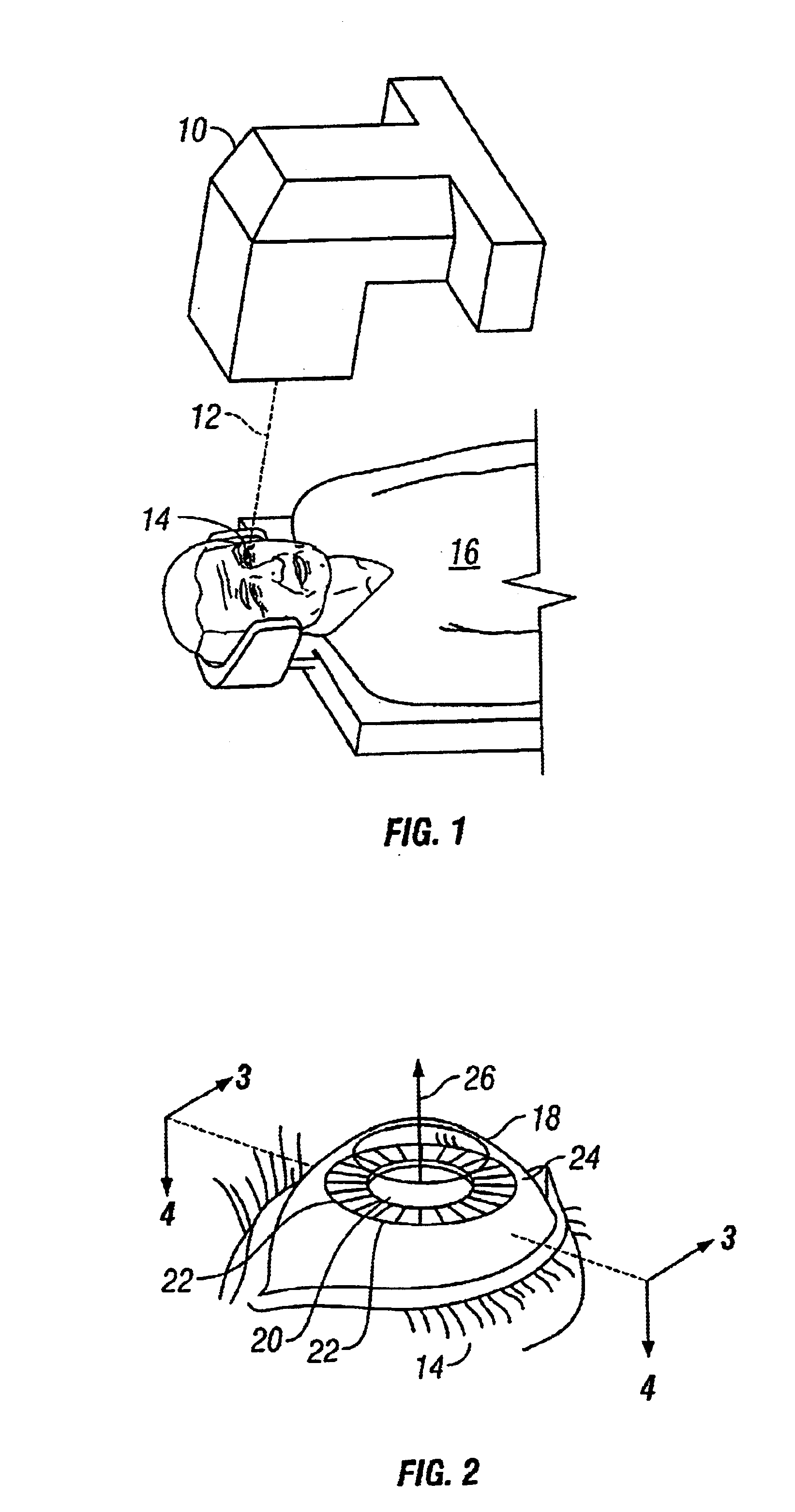System and method for improved material processing using a laser beam
a laser beam and material technology, applied in laser surgery, medical science, surgery, etc., can solve the problems of gas gas emissions, eye defects, and variable or undesired outcomes, and achieve the effect of improving material processing and reducing or reducing the effect of gas emissions
- Summary
- Abstract
- Description
- Claims
- Application Information
AI Technical Summary
Benefits of technology
Problems solved by technology
Method used
Image
Examples
Embodiment Construction
[0043]Referring initially to FIG. 1, an apparatus 10 for generating a laser beam 12 is shown. The laser beam 12 is directed onto an eye 14 of a patient 16. For purposes of the present invention, the apparatus 10 is capable of generating a pulsed laser beam 12 having physical characteristics similar to those of the laser beams generated by a laser system as disclosed and claimed in U.S. Pat. No. 4,764,930, which is exclusively licensed to the assignee of the present invention. Furthermore, the present invention contemplates the use of a pulsed: laser beam 12 which has pulses with durations as long as a few nanoseconds or as short as only a few femtoseconds.
[0044]In one embodiment, a laser unit is controlled by software for photodisruption of the cornea utilizing a laser beam of constant energy, composed of an optical train of pulses with a duration of approximately 600 femtoseconds at a repetition rate of up to several hundred thousand Hz. The actual energy in the emitted pulse train...
PUM
 Login to View More
Login to View More Abstract
Description
Claims
Application Information
 Login to View More
Login to View More - R&D
- Intellectual Property
- Life Sciences
- Materials
- Tech Scout
- Unparalleled Data Quality
- Higher Quality Content
- 60% Fewer Hallucinations
Browse by: Latest US Patents, China's latest patents, Technical Efficacy Thesaurus, Application Domain, Technology Topic, Popular Technical Reports.
© 2025 PatSnap. All rights reserved.Legal|Privacy policy|Modern Slavery Act Transparency Statement|Sitemap|About US| Contact US: help@patsnap.com



